7 Types of Pool Enclosures and How to Pick the Best One for Your Pool
If you’re having trouble narrowing down your options, we’ve got you covered


There are countless reasons to consider the many types of pool enclosures on the market. Not only do they make your pool area safer, but they can keep out bugs, falling leaves, and even the direct rays of the summer sun. The cost of a pool enclosure heavily depends on the type you choose, and each comes with a range of customizable options. Let's dive in.
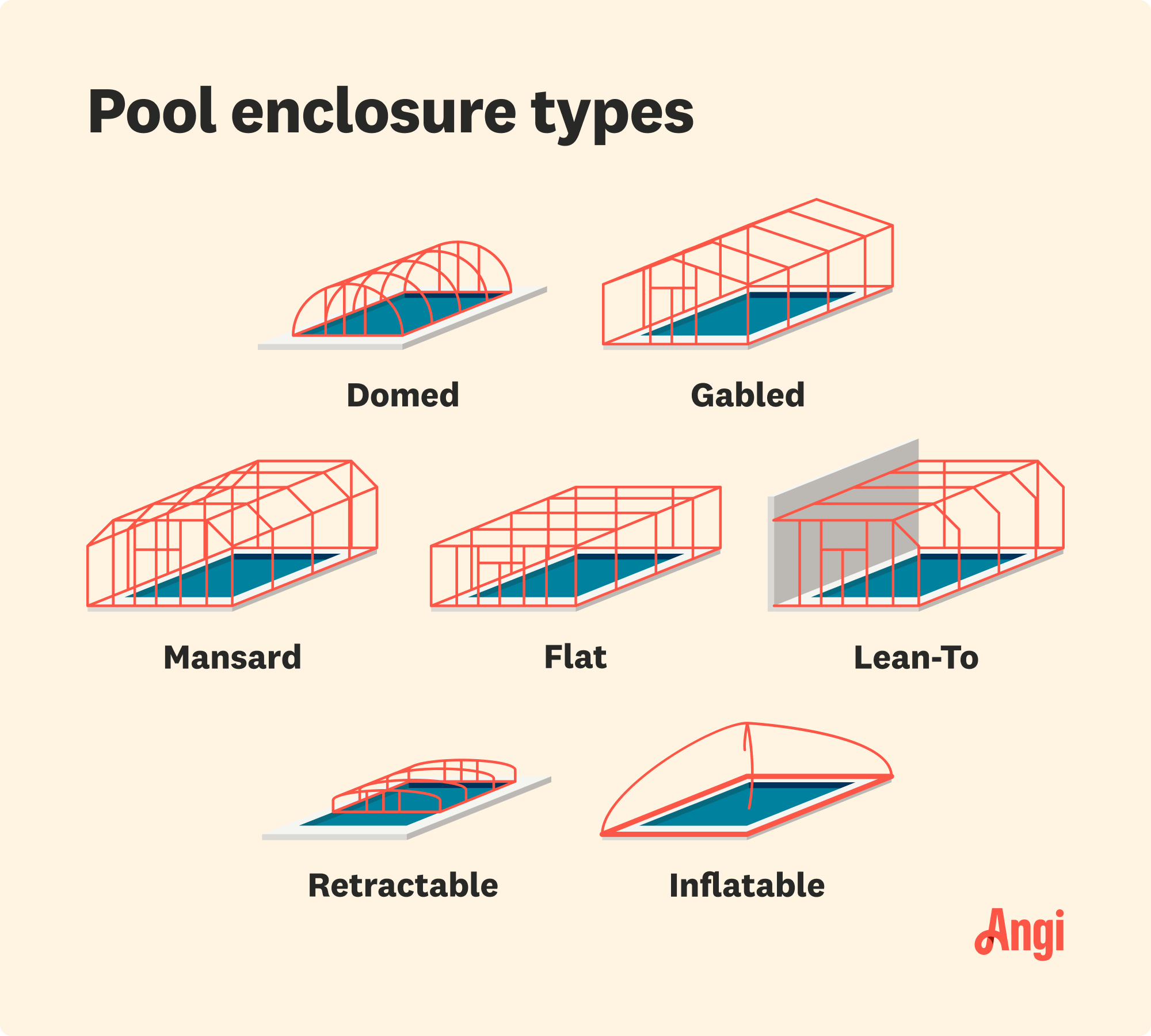
1. Domed Enclosure
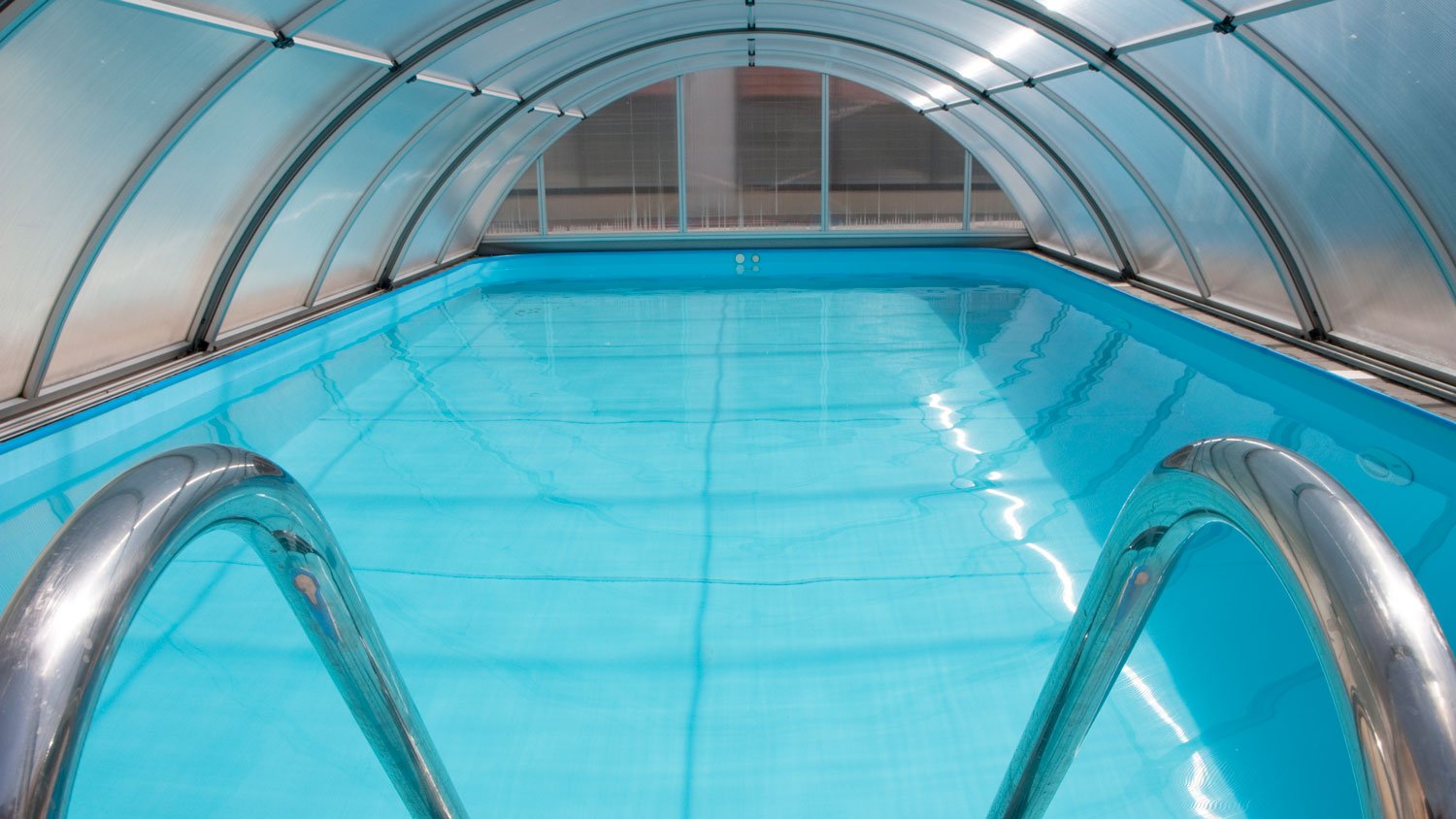
Domed pool enclosures win the popularity contest for a few reasons. They come in a range of heights and materials, but all have a rounded roof design in common. In most cases, polycarbonate framing creates a soft semi-circle shape over your pool for an open-air feel. The rounded roof fights against high winds and keeps snow and debris from piling up.
Domed pool enclosures come in both pre-assembled and DIY options. Installing a larger enclosure is safest with the help of a local sunroom installer, while small and medium designs can be installed yourself. Due to the wide range of designs, domed enclosures are ideal for many types of pools as well.
Keep in mind that dome-shaped enclosures cost more than flat and geometric shapes due to their complexity.
| Pros | Cons |
|---|---|
| Stylish options | Costs more on average |
| Strong in extreme weather | Complex installation |
| Highly customizable | Requires ample space |
Best for: All types of pools in areas with high winds
2. Gabled Enclosure
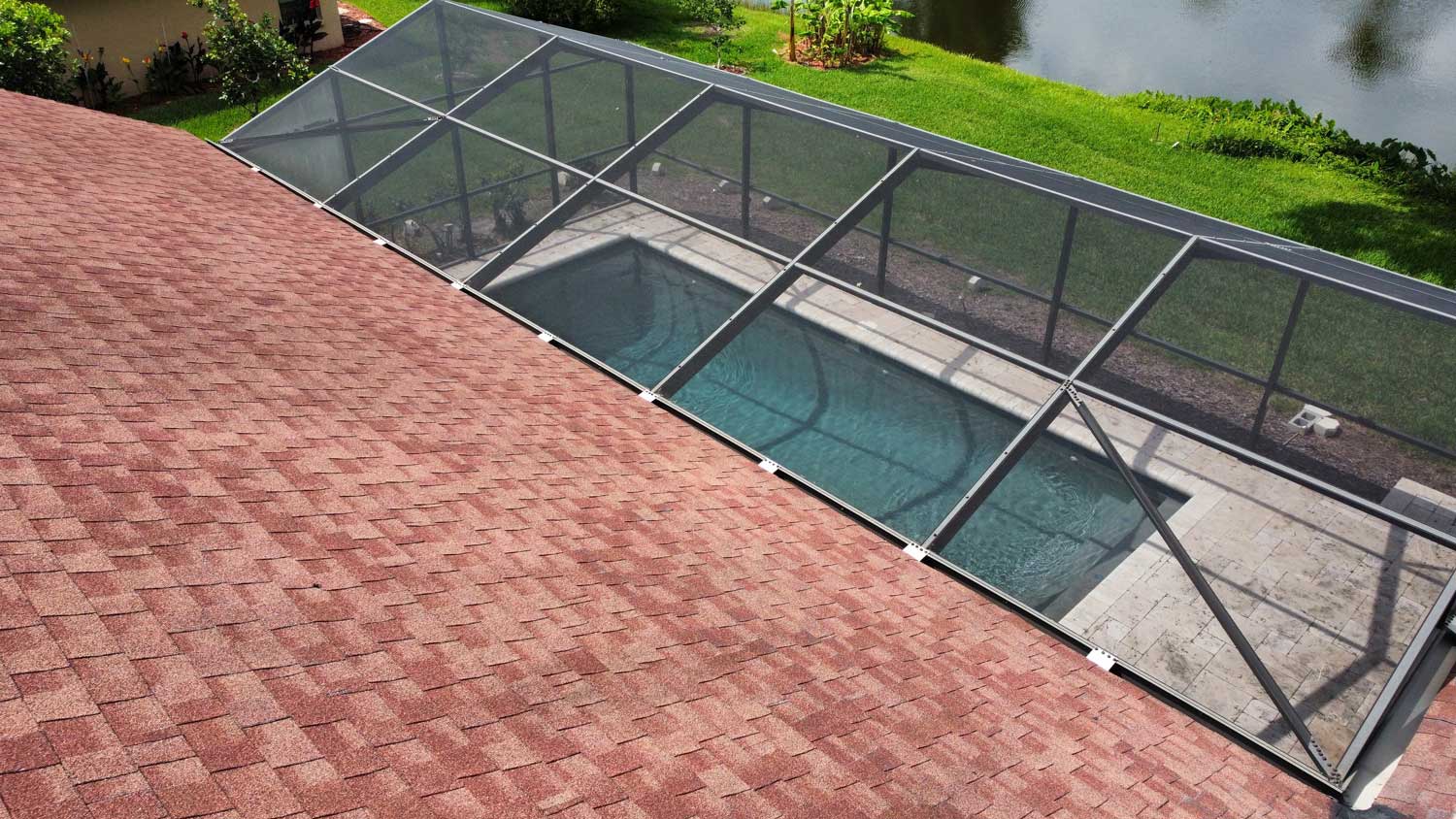
Gabled pool enclosures feature a gabled—or A-frame—roof. They typically peak at the center similar to a gabled roof on a home and slope down evenly on either side. This type of pool enclosure is so stable that it can stand on its own and doesn't need to attach to the nearby house. In other words, if you need to cover a pool that is nowhere near the edge of your home, gabled is a great way to go.
Similar to domed enclosures, those with gable roofs come in a range of heights and shapes with either screens, polycarbonate, or glass between the frames. Due to the strength of the structure, you can also opt for two-story pool enclosures to connect to a home's balcony.
| Pros | Cons |
|---|---|
| Two-story options | Costs more on average |
| Freestanding or attached | Not as strong in high winds |
| Debris slides off roof | Complex installation |
Best for: Freestanding enclosures over pools far from your house
3. Mansard Enclosure
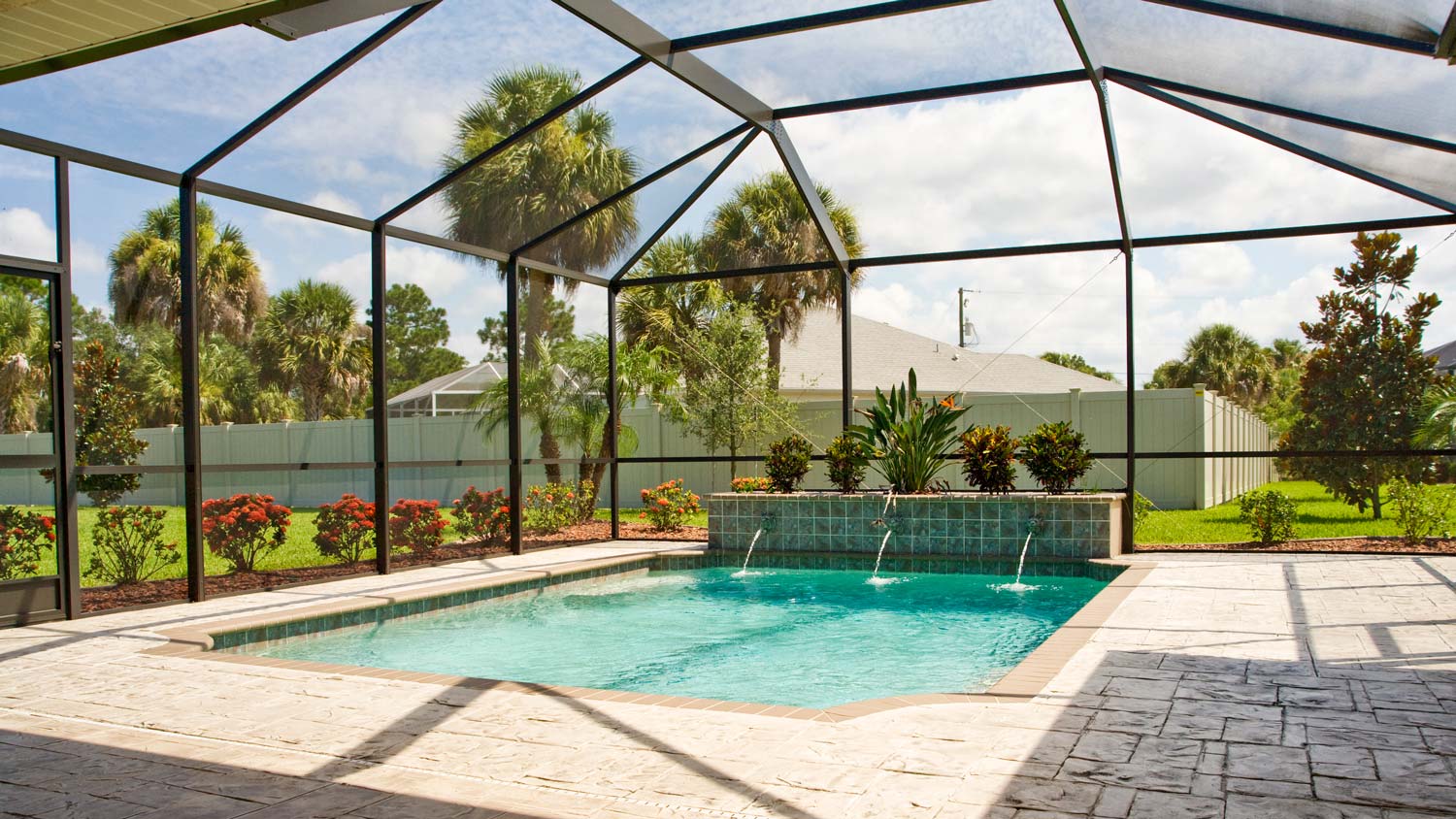
The happy medium between a domed and gabled design, this type of pool enclosure has a mansard roof. Mansard roofs are flat on the top and then slope down evenly on either side. The shape is both sturdy against strong winds and discourages debris from piling on the roof.
Pool owners often choose mansard pool enclosures because of their wide-open, breezy feel. Mansard shapes also often mirror the design of the home itself. Yet again, you'll find mansard enclosures with screens, glass, and polycarbonate, and in a wide range of heights. Due to their customized shape, they often cost more than the other enclosure shapes discussed in this article.
| Pros | Cons |
|---|---|
| Middle-ground options | Costs more on average |
| Matches home style | Flat section on top |
| Strong in high winds | Not best for small pools |
Best for: Large pools in high-wind regions
4. Flat Enclosure
The flat type of pool enclosure is just as it sounds—it has a flat roof and typically has a square or rectangular shape. Due to the straightforward design, it is budget-friendly, and it’s also a bit easier to install the pool enclosure yourself. Flat enclosures are also ideal for those looking to directly extend the pool enclosure from their back patio or roof for a seamless look.
Flat enclosures come with low, medium, and high ceiling heights and both four and three-walled options. They can be a great middle ground between a screened-in porch and a closed poolscape. Keep in mind that they’re not as strong as a domed or mansard roof against extreme weather.
| Pros | Cons |
|---|---|
| Lower cost on average | Not as stable |
| DIY options | Debris can gather on roof |
| Easy to connect to home | Requires more space around trees |
Best for: Budget-friendly enclosure options
5. Lean-To Enclosure
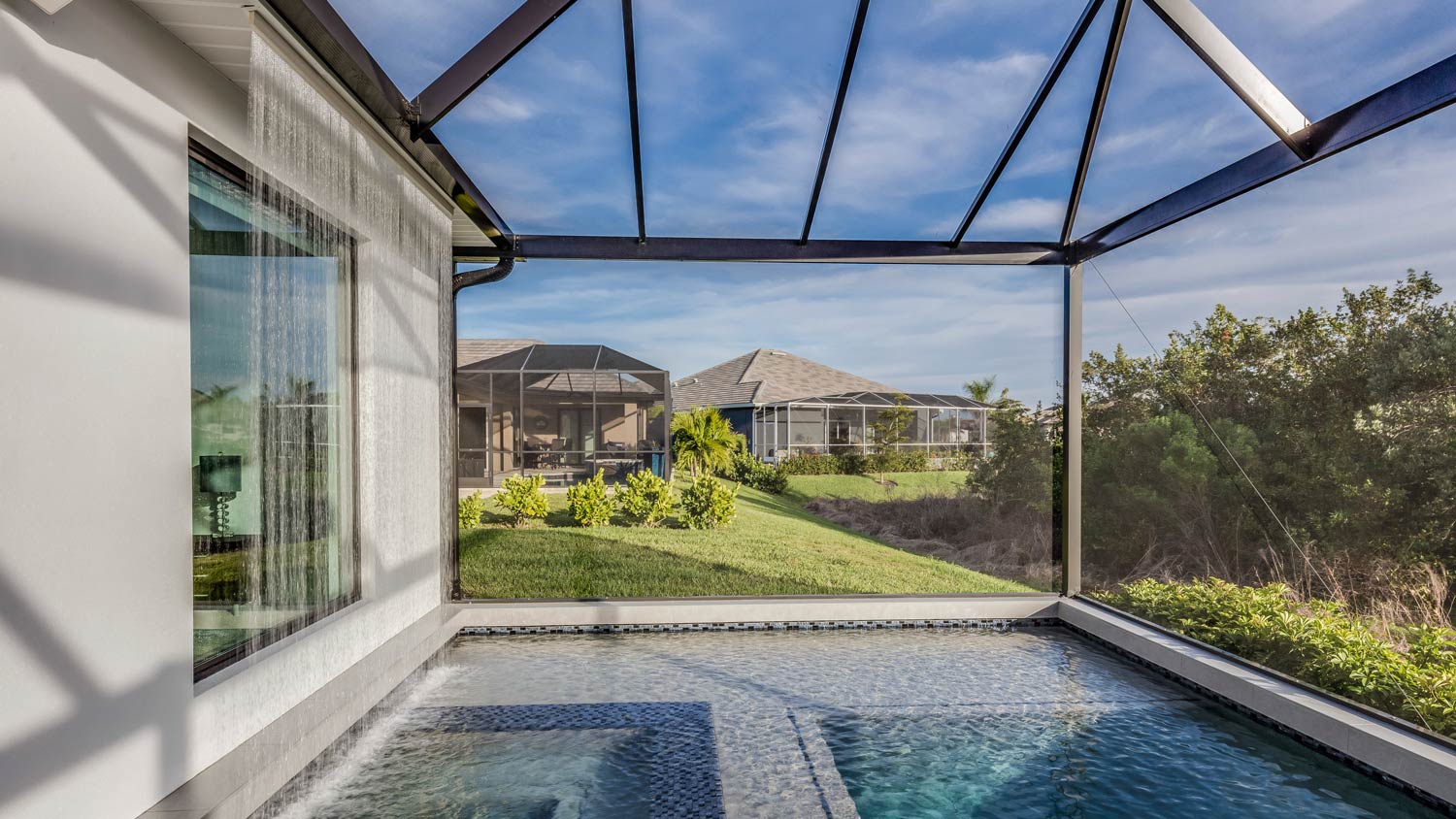
Imagine your pool enclosure directly extending from the side of your home as if it's been there all along. A lean-to pool enclosure comes in a range of shapes and materials but attaches directly to the face of your home to cover your pool. The shape essentially creates a new living space off of your home that you can access seamlessly.
Lean-to enclosures can either close on all sides or leave one side open for airflow on warmer days. They also come in retractable options that allow you to adjust the amount of sun on the pool. It's best to have a professional connect the hardware to your home to protect it from damage, and you may pay a bit more for this design on average.
| Pros | Cons |
|---|---|
| Retractable options | Costs more on average |
| Extends living space | Not ideal for DIY |
| Highly customizable | Must attach to home siding |
Best for: Small pools close to your home
6. Retractable Enclosure
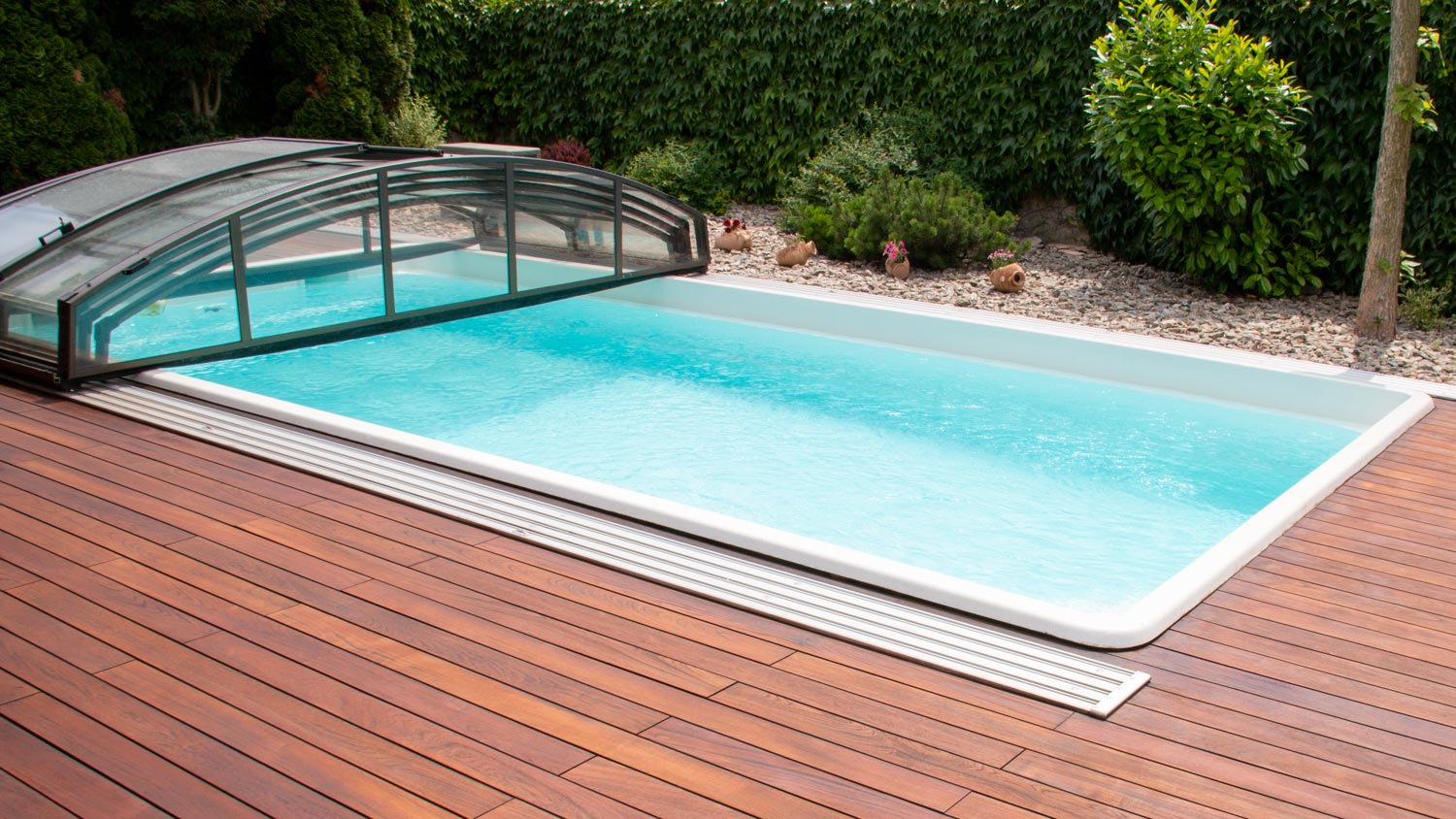
While many designs include retractable options, we’re giving this type of pool enclosure a nod of its own.
Pool enclosures can retract in a variety of ways. Some include panels that open and close, while others close up in a telescopic shape and create space for open-air swimming. Low-profile retractable enclosures are easy to DIY and can open and close easily during swimtime. They are ideal for small pools and even spools—also known as spa pools—or hot tubs. Large retractable enclosures can be complex to install, so it's best to save this project for the pros.
Retractable pool enclosures also act as a great pool cover option to protect your water from debris.
| Pros | Cons |
|---|---|
| Flexible design | High costs |
| Highly customizable | Requires additional hardware |
| DIY options | Not available in all shapes |
Best for: Pools in areas with a range of weather patterns
7. Inflatable Enclosure
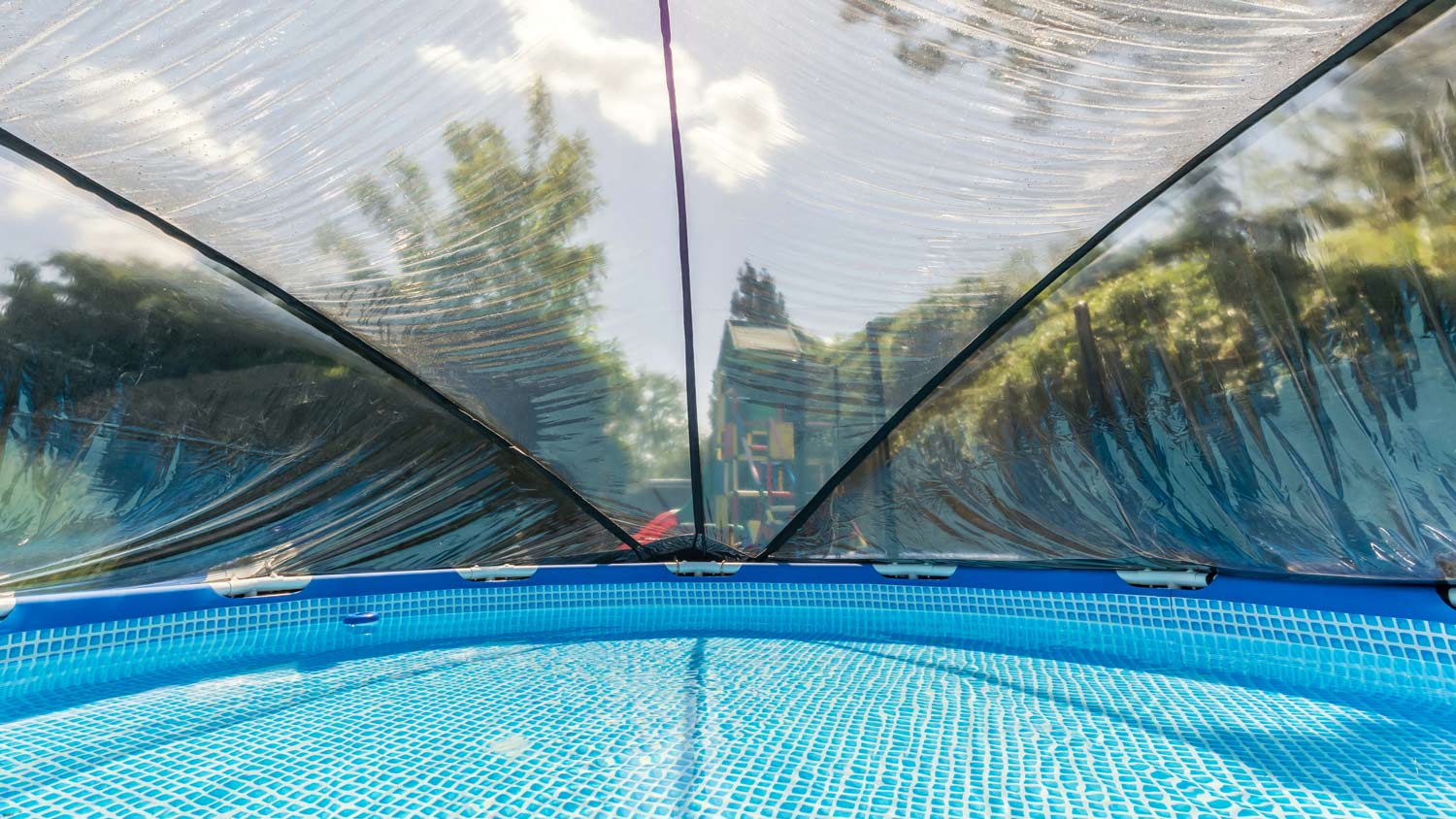
As a quick and budget-friendly alternative, inflatable pool enclosures are ideal for covering the water of both inground and above-ground pools. The structure is easy to set up on your own since it uses a fan to remain inflated. The height of the enclosures varies as well. Some invite swimmers to splash around in a protected space while other enclosures are only ideal for when the pool is not in use.
| Pros | Cons |
|---|---|
| Temporary solution | Not ideal for high winds |
| Budget-friendly | Lower height options |
| Easy to remove | Rarely customizable |
Best for: Temporary pool coverage



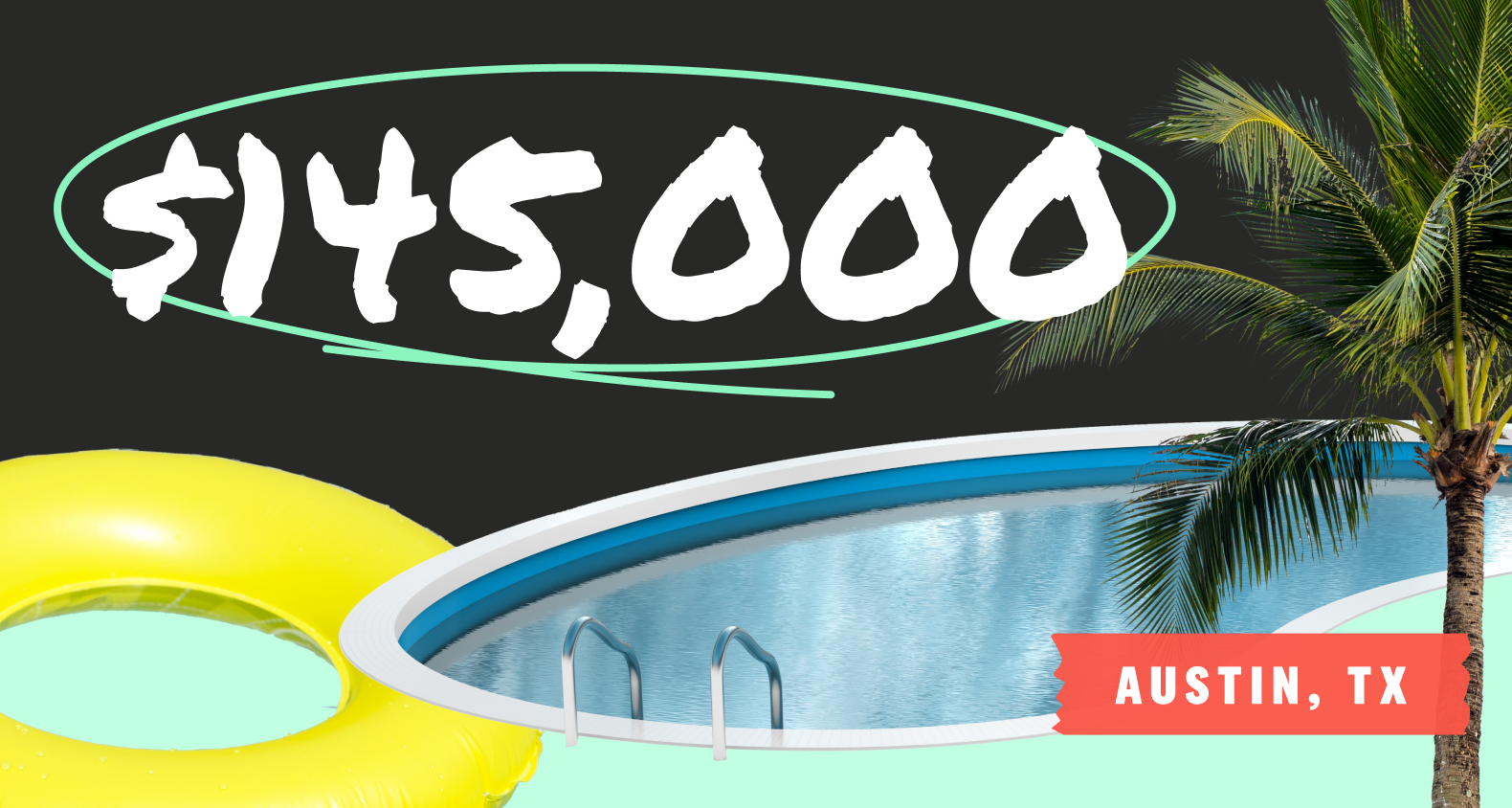

- Swimming Pool Installation
- Pool Liner Replace & Install Companies
- Above Ground Pool Contractors
- Pool Remodeling Companies
- Inground Pool Companies
- Pool Removal Companies
- Inground Pool Repair Companies
- Sauna Companies
- Hot Tub Companies
- Sauna Repair
- Fiberglass Pools
- Pool Designers
- Pool Pump Repair
- Pool Closing Services
- Solar Pool Heater Installers
- How to Build DIY Pool Enclosures to Upgrade Your Swimming Experience
- 9 Types of Shower Enclosures That’ll Immediately Upgrade Your Bathroom
- Pool Size Chart: Common Swimming Pool Sizes and How to Choose the Right One for You
- 10 Things to Consider When Building a Pool
- 9 Tips to Heat a Pool Efficiently (With or Without a Heater)
- Pros and Cons of Filling In a Pool With Dirt
- 9 Inground Pool Shapes to Consider for Your Home
- Pool Building Timeline: How Long Does It Take to Build a Pool?
- What is the ROI on a Pool?
- How To Clean an Above Ground Pool To Keep It Crystal Clear










